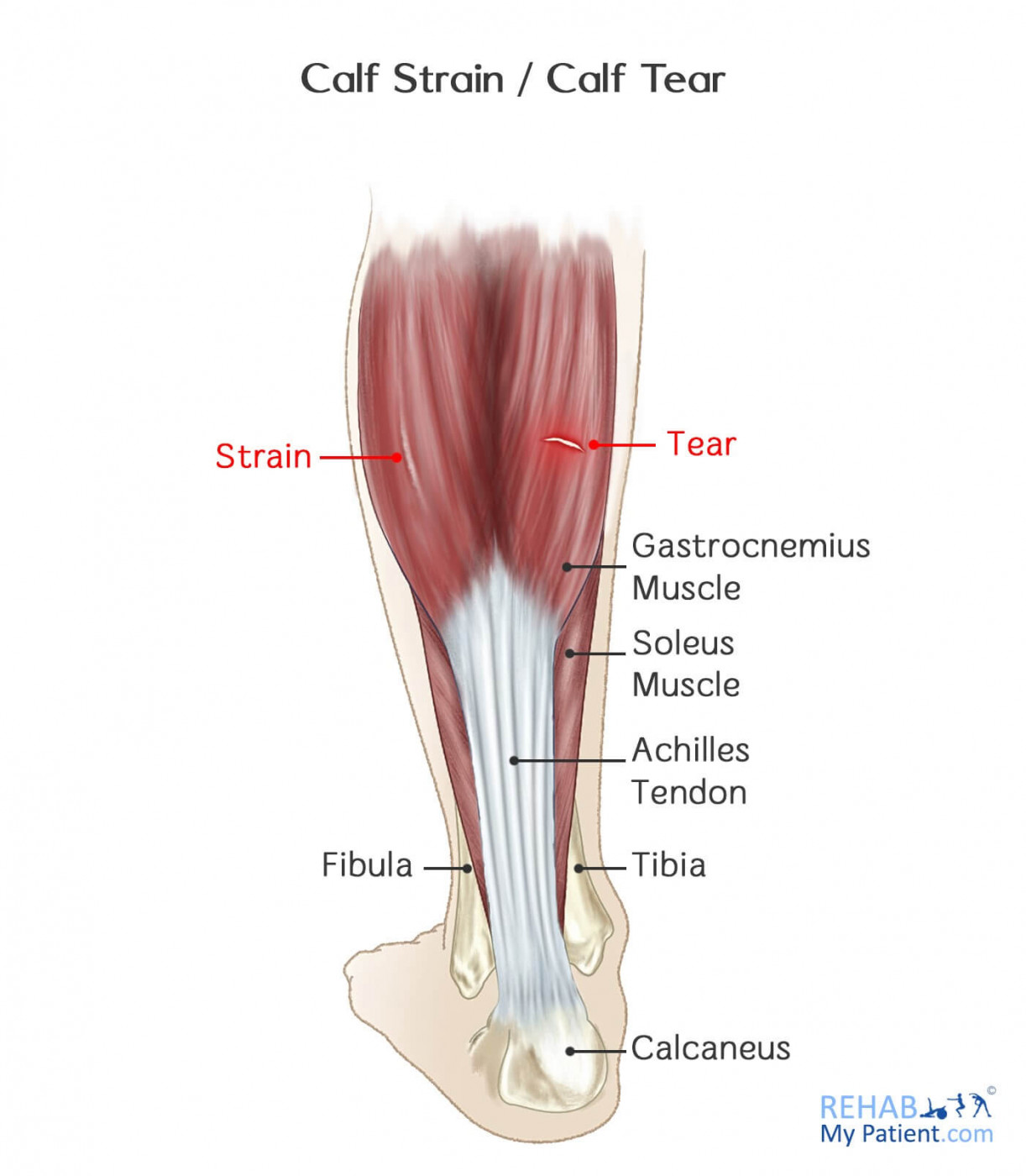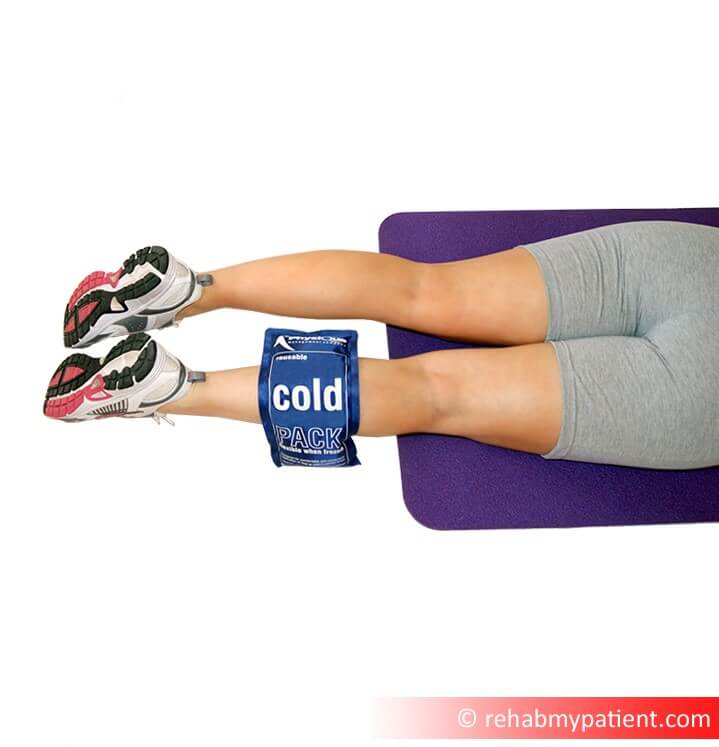
Individuals with calf strains have tearing or stretching of the calf muscle (gastrocnemius or soleus). Calf strains are often the result of an injury. Most of the strains are a partial tear and tears can be classified as Grade I, II or III depending on their severity. Severe calf injuries can cause a complete tear that runs through the gastrocnemius, which is known as a muscle rupture. The Achilles tendon is formed by the calf muscles, and this is also susceptible to a strain or tear.
Any sport that involves running typically leaves you most susceptible to a calf strain or tear.
Calf Strain Anatomy
Four bones make up the entire leg: thighbone (femur), kneecap (patella), thick bone on the front of the lower leg (tibia), and the thin bone along the side of the lower leg (fibula). Below the knee, there are two long bones in the leg: the fibula and the tibia. The muscles within the lower leg are responsible for movement of the ankle and the foot. The back part of the lower leg is referred to as the calf.
The gastrocnemius is the calf's largest muscle. It is attached to the femur along the back of the knee before turning into the Achilles tendon, which is attached to the heel. Thanks to the gastrocnemius, the leg is able to flex at the knee. The plantar is responsible for flexing the foot. Next to and underneath the gastrocnemius is the body’s second calf muscle, the soleus.

How to Treat a Calf Strain:
- Physical Therapy
Hands-on treatment in the form of massage, sports massage, or stretching can aid muscle tears by stimulating blood flow to the area. Exercise prescription can also help with stretching and strengthening. LASER and ultrasound can speed up tissue repair. Functional exercises are latter stage rehabilitation that can aid with returning to sport.
- Compression bandage
A compression bandage can help to minimize the amount of swelling that occurs. Wrap from the toes up to the injured site to prevent additional swelling below the wrapping. Make sure not to wrap the injured muscle too tight. Bandages already have elasticity built in, so they provide you with a degree of compression without having to wrap them tightly.
- Anti-inflammatory medication
Ibuprofen or naproxen is ideal for overcoming inflammation and swelling. If you are unable to take an anti-inflammatory, you can always take acetaminophen for the pain. Make sure to follow the recommended doses on the bottle and check for any drug interactions, and talk to your doctor first.
- Ice
Ice therapy tends to be one of the common lines of defense. Apply an ice pack to the injured site. Apply for five to ten minutes at a time and continue repeating the procedure for four times throughout the day for multiple days. Avoid applying ice directly to the skin. A thin towel between the skin and the ice is ideal.

Tips:
- Avoid running on any hard surfaces. The harder the surface, the more pressure it places on your body. You need to run on surfaces that provide movement to allow your body to flex without adding in strain.
- Make sure you warm up before exercising. Typically start slowly, until your body is warm, before you engage in sport at a harder pace. A warm up might involve a brisk walk before running, for example.
- Stretch after exercising. After you finish your exercise regime, you need to spend a few minutes of gentle stretching to help give your muscles a chance to relax and rejuvenate.
- Jumping a number of times can cause the body to undergo stress that can cause tearing and straining of the muscle.
- If you tear the calf badly, you may need crutches to assist your walking.
Zapisać się
Zarejestruj się już teraz, aby skorzystać z bezpłatnego okresu próbnego!
Zacznij korzystać z Rehab My Patient już dziś i zrewolucjonizuj proces przepisywania ćwiczeń, aby zapewnić sobie skuteczną rehabilitację.
Rozpocznij 14-dniowy bezpłatny okres próbny